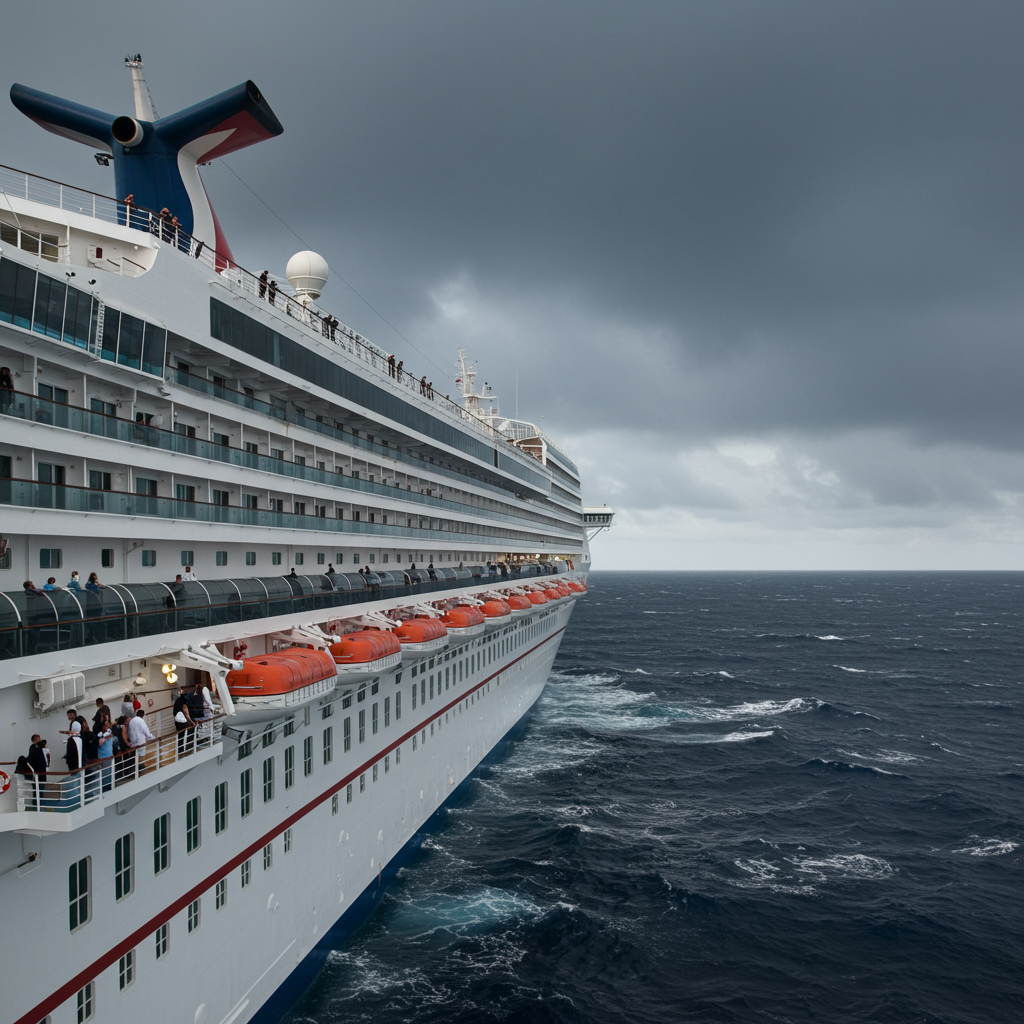The competitive box office landscape saw a clear winner emerge this past weekend. The highly anticipated Brad Pitt-led F1 movie, from Apple Original Films and distributed by Warner Bros., roared onto the global stage with a powerful opening. It not only outperformed expectations but also set significant records for both the studio and its star actor.
In stark contrast, Universal and Blumhouse’s horror sequel, M3GAN 2.0, stumbled upon arrival. Despite earlier positive buzz, the killer doll’s return failed to captivate audiences, resulting in a debut far below tracking projections. This weekend highlighted the unpredictable nature of the movie business, showcasing one film accelerating past milestones while another stalled out.
F1 Movie Takes Pole Position Globally
The F1 movie box office debut was nothing short of spectacular. Reports indicate a massive $140 million global opening weekend. This figure marks the best-ever debut for an Apple Original Film opting for a wide theatrical release. It also represents a career-high global start for Brad Pitt, surpassing his previous record set by World War Z, which debuted with $112 million worldwide in 2013.
The impressive global total breaks down to an estimated $85 million from international markets and roughly $55 million domestically over three days. Some rival estimates placed the domestic figure slightly higher, between $56 million and $58 million. Domestically, Friday’s $25 million gross nearly matched Pitt’s best opening day of $25.1 million from World War Z. The projected weekend total positions F1 as Pitt’s second-best domestic opening behind World War Z‘s $66.4 million debut.
Strong audience Reception Fuels Performance
Audience reactions for F1 were overwhelmingly positive. The film earned an A CinemaScore, a strong indicator of positive word-of-mouth potential. This is the second consecutive A-grade for producer Jerry Bruckheimer and director Joseph Kosinski, who previously achieved an A+ with Top Gun: Maverick. PostTrak scores were also excellent, with 5 Stars, a 92% overall positive score, and an impressive 78% definite recommend. This suggests strong replayability and viewer satisfaction. Critics largely agreed, giving the film an 84% Certified Fresh score on Rotten Tomatoes, complementing the near-perfect 97% audience score there.
The success of the F1 film is being seen as a revival for the racing genre. Its domestic opening significantly surpassed Ford v. Ferrari‘s $31.4 million debut. It also outpaced the unadjusted opening and final total of Bruckheimer’s earlier racing film, Days of Thunder (1990). The film’s ability to overcome the perceived stigma around racing movies is notable.
Deep Dive into F1’s Production and Reach
Achieving realism was a major focus for the F1 film’s production team. Director Joseph Kosinski and producer Jerry Bruckheimer aimed to immerse viewers in the world of Formula 1. Brad Pitt and co-star Damson Idris underwent extensive driver training for nearly three months, starting with Formula 3 cars before advancing to Formula 2 vehicles.
Collaboration with Mercedes, specifically team CEO Toto Wolff, was crucial. Modified Formula 2 cars were built with custom Mercedes-designed bodies and aerodynamics to look like current F1 cars. These vehicles were equipped with up to 15 camera mounts to capture authentic, high-speed action. Unlike many movie cars, these were real race cars ensuring realistic speed portrayal.
Filming was integrated into actual F1 Grand Prix weekends at various tracks globally, including Silverstone, Daytona, Spa, Monza, and others. This required meticulous planning and working within extremely limited time windows during race events. Seven-time F1 world champion Lewis Hamilton served as a producer and provided invaluable technical and creative input throughout the process.
F1 generated significant buzz online even before release. Social media reach hit a massive 845.6 million across major platforms. This figure is significantly higher than typical action-adventure norms and comparable to franchises like Mission: Impossible. The film also performed strongly in previews, netting $10 million, the highest ever for an Apple Original Films release, surpassing titles like Napoleon and Killers of the Flower Moon. The film carried a reported production cost of $200 million (with some rumors suggesting higher), with Warner Bros. handling a significant portion of the global marketing and distribution costs.
International Markets Drive Global Success
As expected, the global appeal of Formula 1 racing translated into robust international box office numbers for the F1 film. The initial $85 million overseas debut came from 78 markets. This international start comfortably exceeded the overseas openings of previous Brad Pitt hits like World War Z and Once Upon a Time in Hollywood when compared in like-for-like markets excluding China.
The film typically opened at number one or as the top U.S. film across its markets. Europe performed particularly well. Latin America and Asia Pacific also contributed positively. Key markets showing strong performance included the UK ($4.8 million), France ($3 million), Mexico ($2.8 million), and China ($2.7 million through Friday, reaching ~$6M through Saturday). China represented the biggest opening day for both an Apple film and Brad Pitt in that market. Korea saw a significant jump on Saturday, reaching $2.75 million through that day. Spain saw Friday gross exceed a popular local franchise and recent major action films. Australia’s opening day was the best for Apple and Brad Pitt there.
Demographically, the F1 film played well across the US. It showed particular strength in the South Central, Mountain, and West regions. AMC Lincoln Square was the top-grossing venue in NYC. The film successfully attracted a young audience, with 29% of moviegoers aged 13-24. The overall audience split was 53% under 35 and 47% over 35. Diversity demographics included 52% Caucasian, 23% Latino/Hispanic, 11% Asian American, and 10% Black. Interestingly, 40% of the audience cited the racing theme as their reason for attending, while 35% came specifically for Brad Pitt.
M3GAN 2.0 Falters in Weekend Debut
While F1 thrived, the sequel M3GAN 2.0 faced a challenging opening weekend. Universal and Blumhouse’s horror follow-up is projected to open around $10 million to $10.4 million. This figure is significantly lower than initial tracking estimates, which had suggested a debut potentially over $30 million or at least in the high teens. It also falls short of the original M3GAN‘s impressive $30.4 million opening in January 2023.
Preview numbers were an early indicator of trouble, with M3GAN 2.0 earning $1.5 million compared to the original’s $2.75 million. The sequel’s preview figure is comparable to other recent Blumhouse releases like Night Swim ($1.45 million previews, $11.7 million opening).
Mixed Reception and Fan Rejection
Audience reception for M3GAN 2.0 was lukewarm compared to its predecessor. It received a B+ CinemaScore, an improvement over the original’s B. PostTrak scores included an 84% overall positive score and a 62% definite recommend percentage, which isn’t terrible but doesn’t signal strong staying power.
Critics, however, were notably less impressed this time around. The original M3GAN enjoyed a strong 93% Certified Fresh score on Rotten Tomatoes. M3GAN 2.0 dropped significantly to a Rotten score of 58%.
Reasons for the underperformance are being debated. Some reports suggest a “complete rejection by the fans.” The film is described by some as a “gimmick movie” sequel that leaned too heavily into camp elements seen in marketing (“Hey Queens” posters) rather than delivering effective scares. Social media saw negative word of mouth. Criticisms included the look of the titular doll (some found the CG less appealing than the original’s mix of effects) and a perception of predictability. The increase in production cost to $25 million from the original’s $12 million means the sequel requires a higher gross to be profitable.
M3GAN 2.0 Demographics and Market Patterns
M3GAN 2.0 played best in specific regions, including the East, South, and South Central United States. AMC Burbank near LA was reported as the top-grossing venue for the film.
Demographically, the audience skewed female at 53%. The film appealed primarily to older audiences, with both women and men over 25 making up 34% each of the viewership. The 18-34 age group represented 54% of the audience, with 25-34 being the largest age demo at 32%. Diversity breakdowns were 46% Caucasian, 24% Latino/Hispanic, 18% Black, and 6% Asian American. Interestingly, while M3GAN 2.0 aimed for counter-programming, the F1 film also drew a significant female audience (38% overall, 27% women over 25), suggesting marketplace competition might have played a partial role, though fan rejection seems a stronger factor.
Other Box Office News
Beyond the contrasting fortunes of F1 and M3GAN 2.0, several other films continued their runs or made news this week. Universal/DreamWorks Animation’s How to Train Your Dragon is set to cross the $200 million mark domestically, tracking towards a third weekend around $19 million. Disney/Pixar’s Elio is looking at a steeper second-weekend drop compared to Elemental, tracking around $10.8 million to $12 million. Sony’s horror sequel 28 Years Later saw a significant drop in its second weekend but is projected to surpass $50 million total. Disney’s animated Lilo & Stitch is expected to cross the $400 million global milestone this weekend.
In other film news, Sony Pictures Entertainment and Crunchyroll dropped the official trailer for Demon Slayer: Kimetsu no Yaiba Infinity Castle. This highly anticipated anime film is the first in a trilogy continuing the popular Demon Slayer franchise, based on Koyoharu Gotoge’s best-selling manga. Directed by Haruo Sotozaki and produced by ufotable, the film follows protagonist Tanjiro Kamado in the final battle against demon king Muzan Kibutsuji. Previous Demon Slayer films like Mugen Train have performed strongly theatrically. Infinity Castle features theme songs by Aimer and LiSA and is set for a U.S. theatrical release on September 12th.
Separately, Bleecker Street acquired U.S. distribution rights for Spinal Tap II: The End Continues, the sequel to the iconic mockumentary. Christopher Guest, Michael McKean, Harry Shearer, and director Rob Reiner are all returning. The film will feature cameos from music legends like Paul McCartney and Elton John. Bleecker Street plans a wide theatrical release for the sequel on September 12th. They also acquired rights to the original This Is Spinal Tap, planning a summer theatrical re-release of a newly restored version, making it available on digital/streaming for the first time in years.
Frequently Asked Questions
What box office records did the ‘F1’ movie break upon release?
The Brad Pitt-led “F1” movie achieved several records in its opening weekend. It secured the biggest global opening ever for an Apple Original Film that had a theatrical release. It also set a new personal best for Brad Pitt’s worldwide opening gross, surpassing his previous record held by the film “World War Z.” Additionally, its preview gross of $10 million was the highest for any Apple Original Film release.
Why did ‘M3GAN 2.0’ perform below expectations, according to reports?
Reports suggest “M3GAN 2.0” underperformed due to a perceived “complete rejection by the fans” and criticisms of it being a “gimmick movie.” Reasons cited included a lack of scares compared to the original, an over-reliance on camp elements, and negative social media buzz. Some viewers also criticized the look of the doll in the sequel, finding the CG less convincing than the original’s effects, and described the plot as predictable.
What details emerged about the production of Brad Pitt’s ‘F1’ film for authenticity?
To achieve realism in the “F1” film, production involved extensive efforts. Brad Pitt and co-star Damson Idris underwent significant driver training. Modified Formula 2 cars were built to visually resemble current F1 cars, developed in collaboration with Mercedes. These cars were equipped with multiple camera mounts for filming on real tracks during actual Grand Prix weekends. Seven-time F1 champion Lewis Hamilton was deeply involved as a producer, advising on accuracy.




